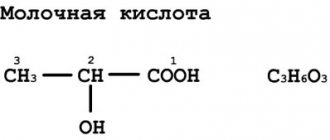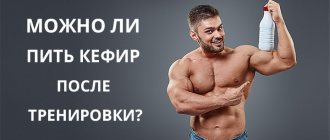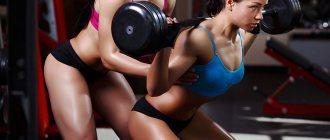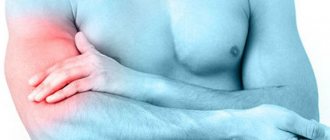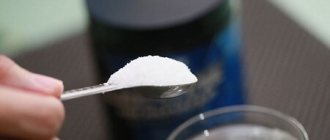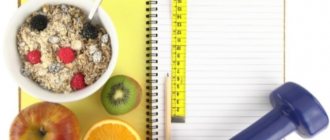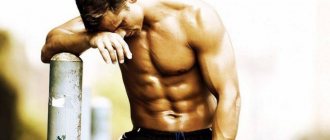Hello! This article is addressed primarily to beginners in bodybuilding. Well done for deciding to go to the gym. That's great! Congratulations to you! The morning after your first class, your muscles were likely very sore. Right?
After completing each training, bodybuilders feel a pleasant muscle pain that goes away very quickly. But what if it causes discomfort and prevents you from continuing your studies? Most often, severe pain occurs in beginners and bodybuilders who have changed the program or increased the intensity of the load.
To prevent or relieve these unpleasant syndromes, you need to understand the mechanism of their occurrence. This is what we will do in this article.
Muscle pain after training[edit | edit code]
The structure of muscle fiber Similar article:
Krepatura
There are several reasons for muscle pain, one of which can, to one degree or another, be classified as physiological, all others as pathological. Muscle pain often occurs 1-2 days after training in athletes and people who exercise after a long break or who have moved to a new level of exercise. Muscle soreness may occur after training when an athlete is first performing a strength program, when performing unfamiliar exercises that use muscles that are not normally used, when working with increased loads, or when the exercise is focused on the eccentric phase. In addition, muscle pain is experienced by beginners who expose themselves to high loads without appropriate adaptation. Ultra-intensive training techniques such as supersets (two exercises performed one after the other without a break) and forced repetitions also contribute to muscle soreness after training.
This condition is called sore throat
, and the pain is explained by microtraumas and inflammation in the muscles, and not, as was mistakenly believed before, due to lactic acid.
Causes of delayed pain[edit | edit code]
Krepatura is characterized by muscle soreness some time after training (8-48 hours). Delayed muscle pain occurs if the increase in training load exceeds 10% of normal.
That exercise causes damage is due to two main mechanisms: disruption of metabolic function and mechanical rupture of the muscle cell. The metabolic mechanism of muscle damage occurs during prolonged submaximal activity to the point of exhaustion, which is often found in bodybuilding techniques. Direct stress on the muscle, especially during the eccentric contraction phase, can cause muscle damage, which can further lead to metabolic changes. One of the most prominent types of injury is muscle cell membrane rupture (eg, mitochondrial ballooning, plasma membrane damage, disruption of myofibrillar components, sacrolemmal rupture)[1].
Compared to concentric contraction, eccentric contraction generates muscle tension, selective deactivation of slow-twitch muscle fibers, and increased activation of fast-twitch motor units[2]. Athletes who use the eccentric method without sufficient strength training or connective tissue adaptations suffer from discomfort and muscle damage. Eccentric contraction produces more heat during the same workout compared to concentric contraction. Elevated temperature can damage the structural and functional components of the muscle cell[3][4].
The cause of delayed muscle pain is considered to be tears in the Z-plate area (actin-binding protein). Muscle overexertion during exercise causes overload of the Z-line, causing deformation or rupture accompanied by disorganization of the adjacent filaments (Friden 1981). The body responds to overload with a protective reaction - inflammation, and activation of immune cells. Studies have found that macrophages promote the formation of prostaglandins in large quantities, which cause pain. Histamine and potassium can also irritate free nerve endings in muscles.
Both mechanisms of muscle damage involve muscle fibers that experience light load, resulting in elevated levels of the enzyme creatine kinase, a marker of muscle damage, for up to 48 hours after a training session. Discomfort occurs within the first 24-48 hours after completing the exercise, and therefore this type of discomfort is called delayed onset muscle soreness syndrome
. However, muscle fibers usually quickly return to their original state; however, if the tension is severe, the muscle will become injured. Thus, a training session that is too intense or intense can result in a feeling of dull, aching pain along with painful tenderness and stiffness that can last up to seven days.
Muscle biopsy results[edit | edit code]
Studies of muscle fibers of athletes using muscle biopsy, conducted by the Laboratory of Fundamental Problems of the Theory of Physical and Technical Training of Athletes at the Sports Research Institute, showed that the cause of pain is the following. In an untrained person, the muscle fibers contain myofibrils of different lengths: short and long. During eccentric exercise, short myofibrils are torn. With regular training, the myofibrils inside the muscle fibers become the same length, and severe pain no longer occurs, and over time it stops altogether. Thus, the presence of lactic acid is not critical. Pain is always a consequence of the destruction of muscle fibers or their ruptures, for example, as a result of injury.
How to reduce pain after training[edit | edit code]
Muscle pain after exercise is relatively safe and goes away on its own without treatment. Pain may intensify when trying to move the pumped muscles or palpate them. To alleviate the condition, you can warm up or repeat the exercises that caused muscle pain in the fresh air or in a ventilated area, reducing the intensity. Massage, stretching exercises, jogging and just rest will help reduce pain, but if this does not work, in some cases small doses of anti-inflammatory drugs are recommended for a short course of 1-2 days.
Among sports nutrition, beta-alanine should be noted, which is a muscle antioxidant with a good evidence base. Also, to reduce muscle pain after training, it is recommended to consume up to 1 g of ascorbic acid and, in extreme cases, NSAIDs (Voltaren, ibuprofen, ketanov, etc.). A hot bath helps dilate blood vessels, thereby accelerating the removal of lactic acid and reducing pain. To prevent pain, always cool down after exercise for 10-20 minutes. It is advisable to take a hot bath immediately after training. Do not try to lift heavy weights if you are just starting to exercise. Increase the load gradually, and at the same time attend training systematically, without long breaks.
Preventing muscle pain[edit | edit code]
The best way to prevent muscle pain, which a trainer needs to remember, is to gradually increase the load during training. Periodization of strength training also helps athletes avoid discomfort, muscle pain and other negative consequences of training activity. In addition, the body is better prepared for work if the athlete performs a meaningful general warm-up. On the other hand, a superficial warm-up can easily lead to sprains and pain. Stretching at the end of your training session is highly recommended. After significant amounts of muscle contraction, which is typical of strength training, muscle size decreases and its length is restored only after several hours of rest. Stretching for one to three minutes helps muscles quickly reach normal length, which is the optimal state for the biochemical processes occurring at the level of muscle fibers. Stretching also relieves muscle cramps.
Proper post-workout nutrition and an appropriate overall diet also have beneficial effects in preventing muscle soreness and recovery.
Athletes who undergo intense stress during strength training require more protein and carbohydrates and may benefit from supplementation such as specific amino acids. Poor nutrition can delay muscle recovery after extreme strain during exercise. Traditionally, massage is believed to reduce muscle pain, and it certainly reduces muscle tone (muscle electrical activity during rest) and helps normalize blood flow and improve general condition.
There is one important aspect that coaches and athletes should always keep in mind: the best plan is early prevention of muscle soreness. The optimal strategy is to maintain consistency when using eccentric contractions. It should be remembered that, similar to increasing the load, slowing down the eccentric phase increases the risk of muscle fiber damage, so you should plan with this in mind.
Benefit or harm[edit | edit code]
There is an opinion in bodybuilding that without pain there is no muscle growth. From repetition to repetition, lifting the weight becomes more and more difficult, that is, more painful. Lactic acid is formed in the muscles; the acid balance is disturbed, and in the end you simply cannot move the weight. This is “good” pain and occurs as a result of natural muscle fatigue. Pain signals that lactate has accumulated and microtraumas have formed, which are growth-stimulating in nature. However, this is not the main indicator of muscle growth, since you can get excellent results without any pain. Currently, there is no reliable evidence that pain is a positive sign, but it is known for certain that excellent results can be obtained without pain.
Many athletes' muscles have a very good ability to recover and adapt, so pain occurs only after long breaks in exercise. However, with systematic training, even after heavy loads, pain does not occur. This is not a cause for concern, nor is it an indication of lack of growth.
Other causes of muscle pain[edit | edit code]
There are a large number of causes of muscle pain, and very often they can indicate pathological processes that require drug treatment and medical intervention. Diseases accompanied by myalgia: myopathy, injuries and ruptures of muscles and ligaments, abscesses, myositis and many others.
The list below outlines the types of pain symptoms that are pathological in nature and require treatment:
- pain in a limb occurs suddenly, without reason
- pain accompanied by swelling or redness
- accompanied by a cracking or clicking sound in the joint
- the pain is getting worse every day
- pain in the limbs associated with movements of the spine
- pain duration exceeds 1 week
- painful "shots"
- pain is felt inside the joint
In addition, pain can be an important sign of overtraining, with wandering phantom pain in the joints and muscles. Unpleasant, nerve-wracking pain appears an hour or two after training, and it comes and goes as it pleases, without external causes. Here you need to take immediate action: immediately reduce the intensity of your training. If the pain does not go away, leave training for 2-3 weeks!
Causes
Biceps tendon and golfer's elbow are both overuse injuries and caused by repetitive, strenuous movements regularly over a period of time. Bicep tendencies usually occur by doing too many overhead exercises. While your biceps workout may not include any overhead exercises, if you do a lot of bench and overhead presses during your other workouts, you may find that your tendons suffer when you train your biceps directly. Golfer's elbow is caused by excessive flexion of the forearm that occurs when you perform any curling motion.
Medicines to relieve muscle pain[edit | edit code]
As first aid, various systemic and local anti-inflammatory drugs - NSAIDs (non-steroidal anti-inflammatory drugs) - are often recommended. An example is drugs such as ketorol, diclofenac, etc. These drugs reduce the severity of inflammation in muscles, nerve trunks, joints and relieve swelling, relieving pain, but also have a number of adverse effects. One of them is a metabolic disorder in the articular cartilage, which can lead to aggravation of the stage of the disease and even destruction of the cartilage. Also, these drugs adversely affect the gastrointestinal system (possible damage to the mucous membrane).
For products applied topically - in the form of ointments (Nise), the risk of negative consequences is much lower; there are release forms with a prolonged (long) period of action. Nonsteroidal anti-inflammatory ointments and gels provide a low concentration of the drug at the site of the lesion, and therefore have relatively low effectiveness.
A separate group is represented by locally irritating drugs (capsicam), the effect of which is based on a distracting effect. Sometimes highly effective drugs are used to treat resistant (unresponsive to therapy) muscle spasms and cramps - local muscle relaxants based on botulinum toxin.
To carry out drug treatment, a doctor's consultation is required.
Treatment
The first step in treating tendonitis is to stop doing any activities that cause soreness or pain and rest the area for about three weeks. Before you start exercising again, try stretching the light on your joints a little to check for pain; then begin training using light weights and not attempting any exercise to the point of failure or poor form. If the pain continues, see your doctor or physical therapist, who may refer you for further treatments such as active release technique or sports massage.
Prevention
Once the soreness has completely subsided and you have started exercising again, the rest of the injury is vital. To avoid damaging your muscles and tendons, stretch regularly after each workout and avoid using weights that are too heavy. Weights that are too heavy cause you to use poor form. If any exercise causes the pain to start again, stop doing it immediately and find an alternative exercise. Regular sports massage can also help keep your tendons injury-free.
Source
How to do self-massage correctly?
Ideally, self-massage should be preceded by a hot shower, the expert notes. This will warm up the body area, dilate blood vessels and prepare muscles, which will significantly increase the effectiveness of the procedure.
Photo: istockphoto.com
There are several basic types of massage that you can perform yourself.
Banks
Cupping massage is often used to combat cellulite. Many people are familiar with this procedure from childhood - when, during illness, their mother or grandmother placed cups on their backs. Today, in addition to the usual glass jars, there are other variations: rubber and silicone. With their help, the procedure can be carried out at home.
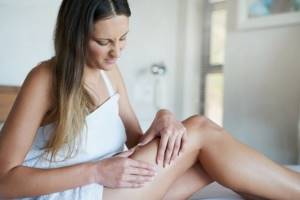
No to cellulite: why else do you need cupping massage and how to do it at home
To get rid of the “orange peel”, you don’t have to spend money on salon treatments.
With a brush
Dry brushing is also known as brushing. It is believed to help get rid of dead skin and cellulite, improve circulation, remove toxins and even improve digestion. It is important to choose a brush with the right bristles and a comfortable handle. And it is recommended to do such a massage not after water procedures, but before.
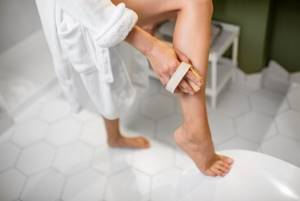
Photo: istockphoto.com
Mitten
To do this you will need a special massage mitten. They are made from different materials and varying degrees of rigidity. For example, rubber makes tougher mittens, while fabric makes softer ones. Everyone can choose an accessory in accordance with their goals and level of sensitivity.

Panacea for the skin: why do you need a massage with a dry brush?
We'll tell you whether it's effective in the fight against cellulite and how to do the procedure correctly.
